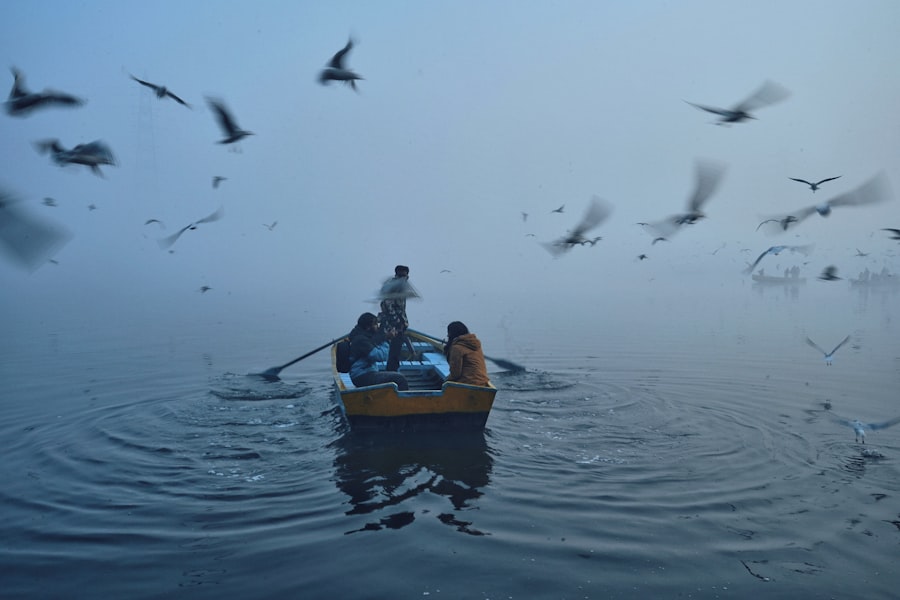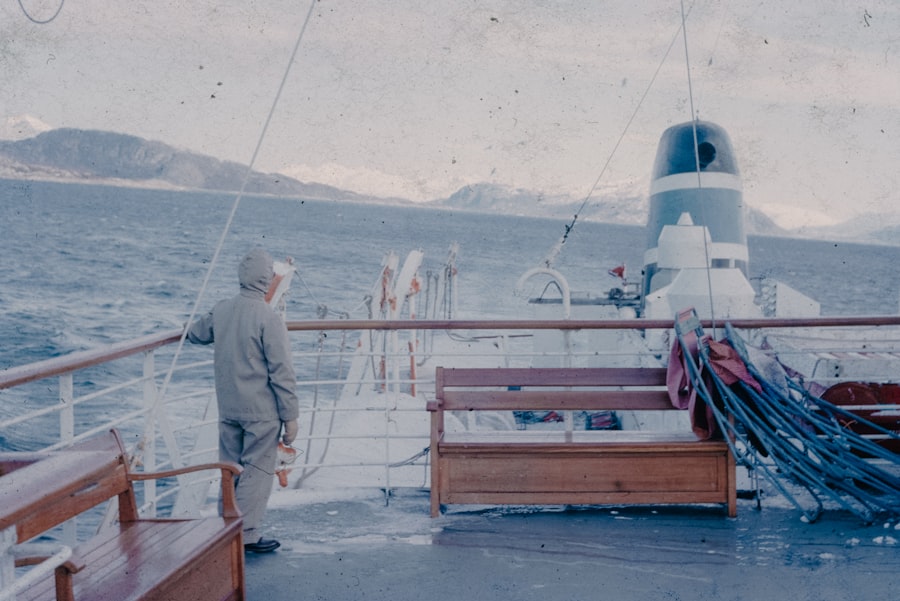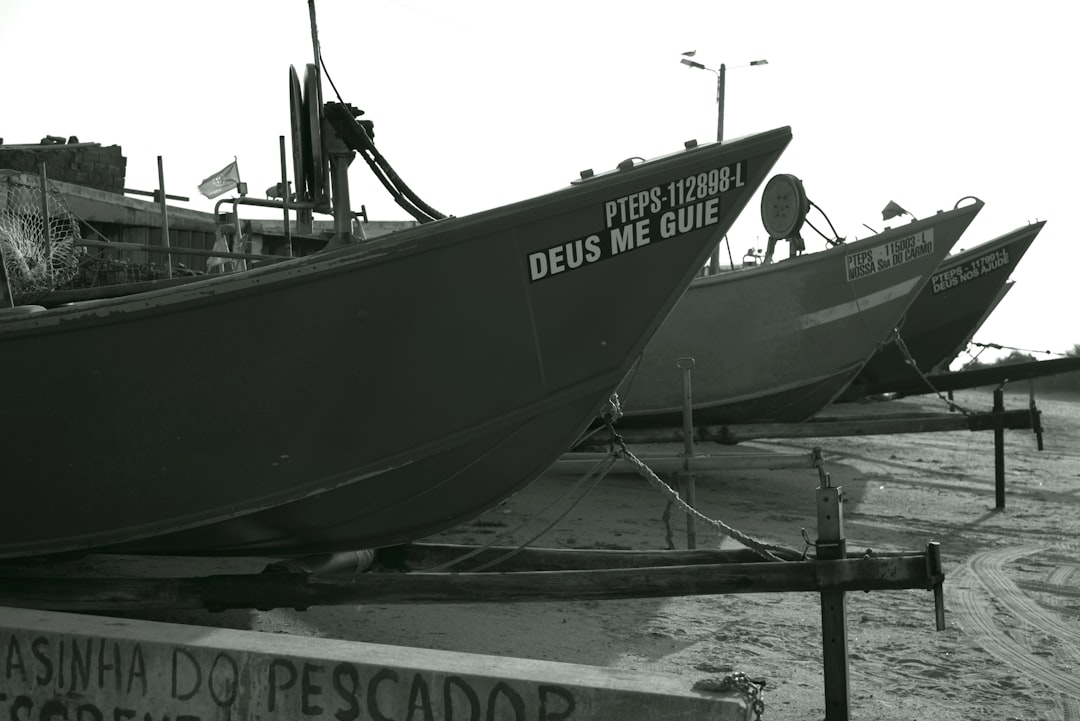The Drake Passage, a body of water that separates South America from Antarctica, is renowned for its tumultuous seas and breathtaking beauty. Stretching approximately 600 miles, this passage is not only a critical maritime route but also a unique ecological zone that plays a significant role in the global climate system. The waters are often characterized by their unpredictable weather patterns, fierce winds, and towering waves, making it one of the most challenging areas for navigation in the world.
Despite its formidable reputation, the Drake Passage is a vital corridor for marine life and a gateway for explorers seeking to uncover the mysteries of the Southern Ocean. As adventurers and researchers alike have discovered, the Drake Passage is more than just a geographical feature; it is a living testament to the power of nature. The confluence of the Atlantic and Pacific Oceans creates a dynamic environment that supports a diverse array of wildlife.
This region has become a focal point for scientific research and exploration, drawing attention to its ecological significance and the challenges it faces in an era of climate change. The Drake Passage stands as a symbol of both the beauty and brutality of nature, captivating those who venture into its depths.
Key Takeaways
- The Drake Passage is a treacherous body of water located between South America’s Cape Horn and the South Shetland Islands of Antarctica.
- The Drake Passage has a rich history of exploration, with early navigators facing extreme conditions and challenges.
- The wildlife of the Drake Passage includes a diverse range of species such as penguins, seals, and whales, making it a unique and important ecosystem.
- Navigating the Drake Passage presents numerous challenges, including strong winds, rough seas, and icebergs, making it one of the most difficult maritime routes in the world.
- The documentary on the Drake Passage showcases the crew’s firsthand experience of the beauty, challenges, and impact of climate change on this remote and important region.
The History of the Drake Passage
The history of the Drake Passage is steeped in exploration and discovery. Named after Sir Francis Drake, the English sea captain who navigated these waters in the late 16th century, this passage has long been a point of interest for sailors and explorers. Drake’s journey marked one of the first recorded crossings of the passage, paving the way for future expeditions to Antarctica.
Over the centuries, countless explorers have braved its treacherous waters, driven by the desire to chart new territories and expand their understanding of the world. In addition to its historical significance in maritime exploration, the Drake Passage has also played a crucial role in scientific research. The region has been a focal point for studies on oceanography, climate change, and marine biology.
Researchers have sought to understand the unique ecosystems that thrive in these frigid waters, as well as the impact of human activity on this delicate environment. The passage has witnessed significant advancements in our understanding of ocean currents and their influence on global weather patterns, making it an essential area for ongoing scientific inquiry.
The Wildlife of the Drake Passage

The wildlife inhabiting the Drake Passage is as diverse as it is fascinating. This region serves as a critical habitat for numerous species, including seals, whales, and various seabirds. Among the most iconic residents are the majestic albatrosses, known for their impressive wingspans and remarkable ability to glide over vast distances without flapping their wings.
These birds are often seen soaring above the waves, embodying the spirit of freedom that characterizes this remote part of the world. In addition to avian life, the waters of the Drake Passage are teeming with marine mammals. Species such as humpback whales, orcas, and minke whales can often be spotted breaching the surface or feeding in the nutrient-rich waters.
The presence of krill, a small shrimp-like crustacean, supports a thriving food web that sustains these larger animals. The intricate balance of life in the Drake Passage highlights its ecological importance and underscores the need for conservation efforts to protect these vulnerable species.
The Challenges of Navigating the Drake Passage
| Challenges | Impact |
|---|---|
| Strong Winds | Difficulty in maintaining course |
| High Waves | Risk of ship instability |
| Narrow Passage | Limited room for maneuvering |
| Icebergs | Potential collision hazard |
Navigating the Drake Passage presents numerous challenges for even the most experienced mariners. The unpredictable weather conditions can shift rapidly, with storms arising seemingly out of nowhere. High winds and rough seas can create hazardous situations for vessels attempting to traverse this stretch of water.
Many sailors have recounted tales of harrowing experiences while crossing the passage, emphasizing its reputation as one of the most dangerous maritime routes in existence. In addition to natural obstacles, navigators must also contend with icebergs and shifting sea ice that can pose significant threats to ships. The presence of these icy giants requires careful planning and constant vigilance to ensure safe passage.
Despite these challenges, many adventurers are drawn to the Drake Passage for its raw beauty and sense of adventure. The thrill of conquering such a formidable route often outweighs the risks involved, making it a rite of passage for those seeking to explore the southernmost reaches of our planet.
The Making of the Documentary
The creation of a documentary focused on the Drake Passage was an ambitious undertaking that required meticulous planning and execution. Filmmakers sought to capture not only the stunning visuals of this remarkable region but also its complex narratives surrounding exploration, wildlife, and climate change. The project involved extensive research and collaboration with scientists and experts who could provide insights into the ecological significance of the passage.
The crew faced unpredictable weather conditions that could hinder shooting schedules and impact safety. However, their determination to document the beauty and challenges of the Drake Passage drove them forward.
Through innovative filming techniques and a commitment to authenticity, they aimed to create a compelling narrative that would resonate with audiences and raise awareness about this vital ecosystem.
The Crew’s Experience

The crew’s experience while filming in the Drake Passage was nothing short of transformative. Each member brought their unique skills and perspectives to the project, contributing to a collaborative atmosphere that fostered creativity and resilience. As they navigated through rough seas and unpredictable weather, they formed strong bonds forged through shared challenges and triumphs.
The crew members were not only filmmakers but also passionate advocates for environmental conservation. Their time spent in the Drake Passage deepened their appreciation for its beauty and fragility. Many found themselves profoundly affected by their encounters with wildlife and the stark landscapes that surrounded them.
These experiences fueled their commitment to raising awareness about climate change and its impact on this pristine environment.
The Impact of Climate Change on the Drake Passage
Climate change poses significant threats to the delicate ecosystems within the Drake Passage. Rising ocean temperatures and melting ice caps are altering marine habitats and affecting species distribution. As krill populations fluctuate due to changing environmental conditions, many animals that rely on them for sustenance face challenges in finding food.
Moreover, increased shipping traffic through the passage raises concerns about pollution and habitat degradation. As more vessels traverse these waters, the risk of oil spills and other environmental hazards grows.
The crew’s documentary aimed to highlight these pressing issues, emphasizing the urgent need for conservation efforts to protect this vital region from further harm.
The Beauty of the Drake Passage
Despite its challenges, the beauty of the Drake Passage is undeniable. The dramatic landscapes are characterized by rugged coastlines, towering mountains, and expansive ice fields that glisten under the sun’s rays. The interplay between light and water creates mesmerizing reflections that captivate all who witness them.
Sunrises and sunsets over this pristine wilderness are nothing short of magical, painting the sky with vibrant hues that leave lasting impressions on those fortunate enough to experience them. The wildlife adds another layer of enchantment to this already stunning environment. Observing whales breaching or albatrosses gliding effortlessly above the waves evokes a sense of wonder that is hard to replicate elsewhere.
Each moment spent in this extraordinary place serves as a reminder of nature’s power and beauty, inspiring those who venture into its depths to advocate for its preservation.
The Importance of Preserving the Drake Passage
Preserving the integrity of the Drake Passage is crucial not only for its unique ecosystems but also for global environmental health. As climate change continues to threaten marine habitats worldwide, protecting this region becomes increasingly urgent. Conservation efforts must focus on sustainable practices that minimize human impact while promoting awareness about the importance of preserving biodiversity.
The documentary serves as a powerful tool for advocacy, raising awareness about the challenges facing the Drake Passage and inspiring action among viewers. By showcasing its beauty and fragility, filmmakers hope to galvanize support for initiatives aimed at protecting this vital ecosystem from further degradation.
The Future of Exploration in the Drake Passage
The future of exploration in the Drake Passage holds both promise and uncertainty. As technology advances, researchers will have new tools at their disposal to study this remote region more comprehensively than ever before. Innovations in underwater robotics and satellite imaging will enhance our understanding of marine ecosystems and their responses to climate change.
However, with increased interest in exploration comes responsibility. It is essential that future expeditions prioritize sustainability and respect for local wildlife while minimizing their ecological footprint. By fostering a culture of stewardship among explorers and researchers alike, there is hope for a future where exploration can coexist harmoniously with conservation efforts.
The Legacy of the Documentary
The legacy of the documentary centered on the Drake Passage extends far beyond its initial release. By capturing both its breathtaking beauty and pressing challenges, filmmakers have created a lasting impact that resonates with audiences worldwide. Through storytelling that emphasizes connection to nature and urgency for action against climate change, they have inspired viewers to reflect on their relationship with our planet.
As discussions surrounding environmental conservation continue to evolve, documentaries like this one play an essential role in shaping public perception and driving meaningful change. The legacy left behind by this project serves as a reminder that while nature may be powerful and unpredictable, it is also incredibly beautiful—and worth fighting to protect for generations to come.
The Drake Passage, a treacherous stretch of water between the southern tip of South America and Antarctica, has long fascinated explorers and scientists alike. A recent documentary delves into the challenges and discoveries associated with this formidable maritime route. For those interested in further exploring the geographical and historical significance of such regions, an article on MyGeoQuest provides additional insights. You can read more about related geographical explorations by visiting this article on MyGeoQuest.
WATCH NOW! Drake Passage: Earth’s Deadliest Waters Revealed
FAQs
What is the Drake Passage?
The Drake Passage is the body of water between the southern tip of South America and the northern tip of the Antarctic Peninsula. It is known for its rough seas and challenging sailing conditions.
What is the Drake Passage documentary about?
The Drake Passage documentary explores the unique and treacherous conditions of the passage, as well as the wildlife and natural beauty of the surrounding areas. It may also delve into the history of exploration and scientific research in the region.
Who is involved in the production of the Drake Passage documentary?
The documentary may involve a team of filmmakers, scientists, and explorers who have experience in the region. It may also feature interviews with experts and individuals who have firsthand knowledge of the Drake Passage.
Where can I watch the Drake Passage documentary?
The documentary may be available for viewing on streaming platforms, through educational institutions, or at special screenings and events. Check with the production team or relevant organizations for information on where to watch the documentary.
What can I expect to learn from the Drake Passage documentary?
Viewers can expect to learn about the unique ecosystem of the region, the challenges of navigating the passage, the history of exploration in the area, and the ongoing scientific research being conducted there. The documentary may also highlight the importance of conservation efforts in the Southern Ocean.
